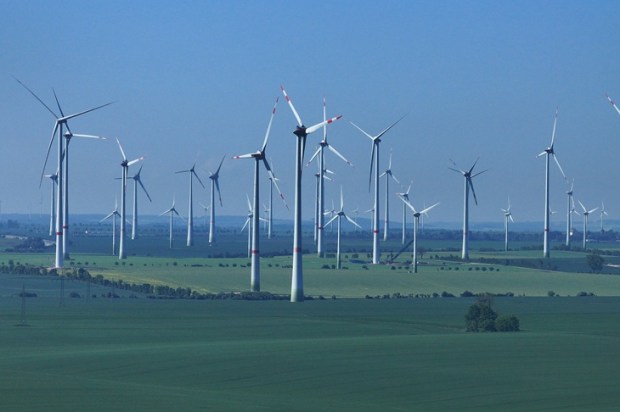Can the United States, and its wind farms, escape from the wind drought trap?
The US is only one Democrat Administration away from following the catastrophic example of Germany and Britain. They are in the jaws of the wind drought trap and it is up to the incoming Trump Administration to get them out.
The power crisis experienced by Texas in February 2021 was a taste of things to come and occurred when a bitter cold spell and low winds overnight caused a partial blackout of the State. The inadequately winterised gas supply under-performed and a complete blackout was only narrowly averted due to coal and nuclear capacity. Hundreds died and a complete blackout could have killed many thousands.
Energy grids across the US are headed this way, as are other energy systems where Net Zero policies are in place.
The trap was set slowly over many years as subsidies and mandates for unreliable energy displaced conventional power without being able to replace it. Contrary to the doctrine of the Albanese government, there is no way to firm unreliable energy by installing more unreliable energy.
There is a ‘frog in the saucepan’ effect taking place because conventional power retires in small steps. This does not cause noticeable problems in the early years while there remains spare capacity. That was the case in SE Australia before Hazelwood and Liddell closed. The trap only causes public alarm when it is too late, as we see in Britain and Germany.
The US is moving rapidly in the same direction and grid managers are becoming increasingly agitated. Apparently, they have not effectively shared their concerns with the general public and there is no electoral pressure on the lawmakers to change course. The incoming administration will have to provide a crash course in wind literacy to change the public perception of wind power and explain the value of coal power, especially in extremely cold conditions.
The trap closes when the conventional power capacity (traditionally dominated by coal) declines to a critical point, a ‘tipping point’, where there is not enough to meet the base load overnight. Then the grid is in a ‘red zone’ where windless nights are potentially lethal because there is no wind or solar generation, regardless of the amount of installed capacity.
The incompetence or negligence of the government meteorologists around the world allowed this situation to develop because they didn’t issue wind drought warnings even though they know that high pressure systems cause low winds.
Consequently, the Dunkelflautes came as a surprise in Europe even though mariners and millers must have experienced them for centuries.
The plot thickens when we discover that at least some global meteorological services must have known about wind droughts because the first assessment report of the IPCC recommended a survey of the wind resources of the world to assess the prospects for large-scale wind power. That would have been led by official meteorologists around the world.
Moreover, these same meteorological bodies were the first movers in the climate alarm campaign in the United Nations and have a habit of implying that extreme weather events are linked to climate change.
The climate alarmists in the UN, in my opinion, set out to wreck the capitalist economies of the West (to save the planet?) and they have practically achieved that objective in Britain and Germany where the lights are kept on precariously with imported power while they deindustrialise to reduce demand.
Australia is on the cusp and it remains to be seen how the old coal burners can keep running for a decade or three until nuclear power may be available at scale.
Turning to the United States, there is no time to waste to avoid the trap by saving coal and gas generators from the impending EPA regulations that were designed to close them down.
Community support for the Net Zero program must be undermined by explaining the wind drought problem, which makes the energy transition impossible, and the cost of the program, which makes the effort prohibitively expensive. The public need to know that trillions of dollars have been spent to make power more expensive and less reliable, with catastrophic damage done to the planet.
At the same time, meteorologists should be put on the rack and forced to confess that they have been playing a devious game.
That will justify the termination of financial support to the offending agencies.
With leadership from the federal administration and support from red states, a sustained and effective communication campaign could give climate and energy realism a moral ascendancy over the ideological, financial, and political interests that support the climate industrial complex.
Simple as the ABC of intermittent energy!
What could go wrong?

























